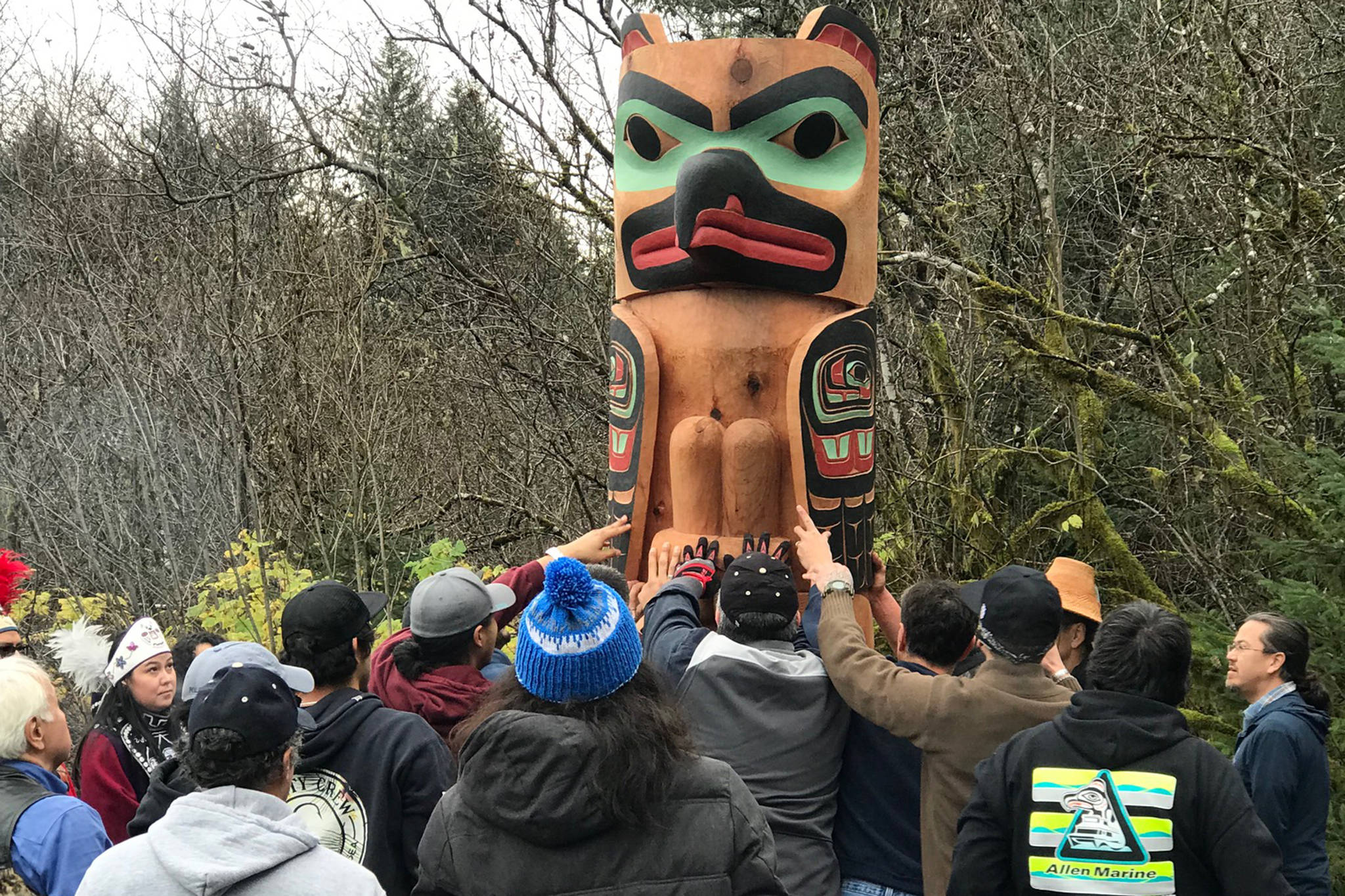Alison Marks marked the spot.
Marks, an artist, recently became perhaps the first Tlingit woman to carve and raise a totem pole. The finished piece was raised at noon Oct. 27 in Yakutat by the house built by her grandfather, John Bremner, whom the work honors.
“It’s called, ‘Yaa Khaa Kootéeyaa,’ which is my grandfather’s Tlingit name and the word totem pole,” Marks told the Capital City Weekly Wednesday by phone. “The whole project was carved under the guidance of David A. Boxley, and it’s a 10-foot red cedar pole. It’s an old-growth log, so the log itself is over 500 years old. The figure on top is a raven, which grandfather’s clan, and on the bottom is my grandfather holding a thermos of coffee. It’s based on his thermos that he would always take out hunting and fishing.”
Marks has studied under Boxley, a master Tsimshian carver, and his son, master Tsimshian carver David R. Boxley. Both provided some oversight and help to the project. Marks said support from James W. Ray Venture Project Award from the Frye Art Museum/Artist Trust Consortium started in Kingston, Washington, and wrapped up in Yakutat.
“I lived with it there,” Marks said. “My dad built a little work tent for me out in front of my grandfather’s house. It got so cold there in Yakutat that the coffee would freeze in my mug.”
The totem pole is the first that Marks has carved, and some researchers have suggested it may be the first totem pole ever carved by a Tlingit woman.
“To our knowledge, I’m the first Tlingit woman to carve a totem pole,” Marks said. “I was doing a panel discussion with two Northwest Coast art scholars, and they said, ‘You should claim that.’”
Marks said at first she was resistant to the idea.
“But they said, ‘Come on Alison, if you were a man and were the first to do something, you would claim it.’ So, I’m reluctantly claiming it,” Marks said.
Marks said as far as she can tell, there are two main reasons why a woman carving a totem pole is uncommon if not unprecedented.
The first is that, carving can be laborious.
“I found out after the fact, it is very physical work,” Marks said. “There were some parts of the work my mentors, David A. and David R. could do with one arm, but would take me all of my body work.”
The other reason is the work women had to do to keep a large clan healthy and fed.
“From what I can tell, women weren’t forbidden to, it was just at that you were really, really busy,” Marks said.
• Contact arts and culture reporter Ben Hohenstatt at (907)523-2243 or bhohenstatt@juneauempire.com.

